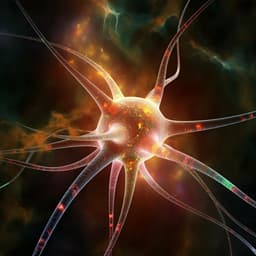Introduction
Tea, particularly black tea, is a globally popular beverage known for its potential health benefits attributed to its antioxidant properties. These benefits are largely associated with long-term consumption, but the immediate effects of tea on the body remain less understood. Saliva, the first biological fluid to contact ingested substances, plays a crucial role in oral redox homeostasis. This study aimed to determine the immediate and delayed effects of black tea consumption, considering the influence of temperature, on salivary flow rate and various redox markers. Understanding these short-term effects is critical because they are closely linked to oral sensations and potentially mucosal inflammation. Previous research has focused extensively on fermentation and brewing temperatures' impact on tea quality, but the effects of the serving temperature on salivary composition and redox state are understudied. One report showed that water at 3°C stimulates a greater increase in salivary flow rate compared to warmer temperatures, affecting the salivary composition. Thus, this study aims to clarify the distinct influences of black tea components and water on salivary redox status, along with the impact of tea drinking temperature, using a controlled experiment involving hot and cold black tea and water as controls, assessing salivary flow rate, total protein content, total antioxidant capacity (FRAP), uric acid, thiol content, and malondialdehyde content at different time points post-consumption.
Literature Review
Existing literature highlights the long-term health benefits of tea consumption, primarily focusing on its antioxidant and free radical scavenging properties due to polyphenols and flavonoids. These components exhibit various health benefits, including inhibiting cancer cell proliferation, regulating metabolism, enhancing the immune system, and improving detoxification. However, the immediate effects of tea on saliva, the first biological fluid exposed to ingested components, have received limited attention. Saliva maintains oral redox homeostasis through antioxidants such as catalase, superoxide dismutase, glutathione peroxidase, uric acid, and thiols. Malondialdehyde levels, a lipid oxidation product, serve as an oxidative stress indicator in saliva. Salivary flow rate also influences salivary composition, adding complexity to research. Previous studies in the lab have investigated the impacts of different teas on salivary composition but haven't fully controlled for the effects of the water in the tea infusion. Therefore, this study uses water at corresponding temperatures as a control to isolate the effects of tea components from the simple effects of water.
Methodology
Twenty healthy adults (13 females, 7 males; age 20-30 years; BMI 17.98-24.03) participated. Participants were instructed to avoid smoking, alcohol, tea, mouthwash, medications, and supplements three months prior to the study. Informed consent was obtained, and the study was approved by the University Ethics Committee. Black tea (Lapsang souchong) was prepared at a 1:30 tea leaf to water ratio, steeped twice for 15 seconds each. Hot tea (57 ± 0.5 °C) and cold tea (8 ± 0.5 °C) were prepared. Deionized water at the same temperatures served as controls. Participants consumed 200 mL of each beverage on two separate days. Unstimulated whole saliva was collected before (Stage 1), 3 min after (Stage 2), and 30 min after (Stage 3) ingestion. Saliva was centrifuged to remove debris, and the supernatant was stored at -80 °C. Salivary flow rate (SFR) was calculated by dividing saliva volume (mL) by collection time (min). Total protein content (TPC) was determined using the BCA method. Salivary thiol (SH) content was measured using the DTNB assay. Antioxidant capacity (FRAP) was assessed using the FRAP assay. Uric acid (UA) concentration was measured using an enzymatic method. Malondialdehyde (MDA) content was determined using the TBA method. Statistical analysis involved one-way ANOVA, Tukey's post hoc test, principal component analysis (PCA), and Pearson correlation analysis.
Key Findings
Neither black tea nor water significantly altered salivary flow rate. Black tea immediately and significantly increased salivary thiol (SH) and malondialdehyde (MDA) levels while significantly decreasing uric acid (UA). Water ingestion immediately decreased MDA and significantly increased UA levels after 30 minutes. Cold water induced a greater delayed increase in total salivary protein (TPC) than hot water. PCA revealed that TPC, FRAP, SH, and MDA contributed largely to one factor, while UA contributed to another, indicating distinct relationships among these salivary parameters. Correlation analysis showed strong positive correlations between TPC and UA before ingestion, but after black tea ingestion, significant negative correlations were observed between UA and FRAP, UA and SH, and UA and MDA. There were significant positive correlations between SH and FRAP, SH and MDA, and MDA and TPC, indicating a shift in salivary redox parameters. Thirty minutes post-ingestion, correlations generally weakened, except for the negative correlation between TPC and SFR, and SH and SFR. Comparing the correlations between 3 and 30 min post-ingestion for both water and black tea, the black tea showed stronger and more distinct correlations, particularly negative correlations between SH, FRAP, and MDA, and UA, further emphasizing the distinct effect of black tea on salivary redox parameters.
Discussion
The findings demonstrate that black tea acutely and significantly alters salivary redox parameters, distinct from the effects of water. The increase in salivary thiol (SH) suggests an elevated reducing capacity, consistent with the increase in FRAP (although not statistically significant). The reduction in UA, a major salivary antioxidant, along with the increase in MDA, a marker of oxidative stress, suggests a complex interplay of antioxidant and pro-oxidant effects of black tea. The temperature of the beverage also influences some salivary attributes, particularly cold water's effect on TPC. The strong correlations between certain salivary parameters after black tea consumption suggest a coordinated response in the oral redox system, potentially influencing oral health and overall well-being. These short-term effects may influence oral sensations and contribute to the long-term health effects associated with tea consumption. This work is important because few studies focus on the acute effects of tea on saliva and the effect of tea temperature. This study provides valuable insight into the complex relationship between tea consumption and oral physiology.
Conclusion
This study provides novel evidence for the acute and distinct effects of black tea consumption on salivary redox homeostasis. Black tea consumption leads to significant and immediate changes in several salivary parameters. The temperature of the beverage influences the response, emphasizing the need to consider this factor in future research. Future studies should investigate the molecular mechanisms underlying these effects, and whether they correlate with long-term health outcomes. Furthermore, exploration of these effects on individuals with oral diseases or specific health conditions would enhance our understanding of tea's potential therapeutic effects.
Limitations
The relatively small sample size limits the generalizability of the findings. The study focused on a specific type of black tea; the effects of other tea varieties might differ. The study design relied on self-reported exclusion criteria; potential confounding factors related to dietary habits and health status may not have been fully controlled. Future studies would benefit from a larger sample size, including diverse tea types, and incorporating more detailed assessments of participants' dietary and lifestyle habits.
Related Publications
Explore these studies to deepen your understanding of the subject.






